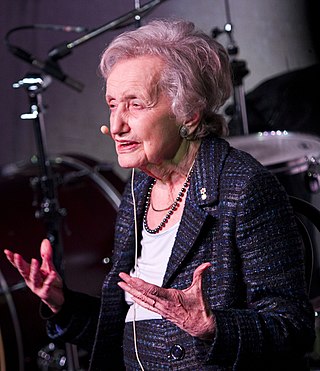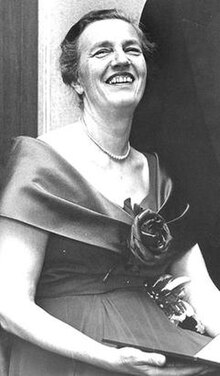
Neuropsychology is a branch of psychology concerned with how a person's cognition and behavior are related to the brain and the rest of the nervous system. Professionals in this branch of psychology focus on how injuries or illnesses of the brain affect cognitive and behavioral functions.

Neuropsychological tests are specifically designed tasks that are used to measure a psychological function known to be linked to a particular brain structure or pathway. Tests are used for research into brain function and in a clinical setting for the diagnosis of deficits. They usually involve the systematic administration of clearly defined procedures in a formal environment. Neuropsychological tests are typically administered to a single person working with an examiner in a quiet office environment,free from distractions. As such,it can be argued that neuropsychological tests at times offer an estimate of a person's peak level of cognitive performance. Neuropsychological tests are a core component of the process of conducting neuropsychological assessment,along with personal,interpersonal and contextual factors.

Cognitive neuropsychology is a branch of cognitive psychology that aims to understand how the structure and function of the brain relates to specific psychological processes. Cognitive psychology is the science that looks at how mental processes are responsible for the cognitive abilities to store and produce new memories,produce language,recognize people and objects,as well as our ability to reason and problem solve. Cognitive neuropsychology places a particular emphasis on studying the cognitive effects of brain injury or neurological illness with a view to inferring models of normal cognitive functioning. Evidence is based on case studies of individual brain damaged patients who show deficits in brain areas and from patients who exhibit double dissociations. Double dissociations involve two patients and two tasks. One patient is impaired at one task but normal on the other,while the other patient is normal on the first task and impaired on the other. For example,patient A would be poor at reading printed words while still being normal at understanding spoken words,while the patient B would be normal at understanding written words and be poor at understanding spoken words. Scientists can interpret this information to explain how there is a single cognitive module for word comprehension. From studies like these,researchers infer that different areas of the brain are highly specialised. Cognitive neuropsychology can be distinguished from cognitive neuroscience,which is also interested in brain-damaged patients,but is particularly focused on uncovering the neural mechanisms underlying cognitive processes.

Alexander Romanovich Luria was a Soviet neuropsychologist,often credited as a father of modern neuropsychology. He developed an extensive and original battery of neuropsychological tests during his clinical work with brain-injured victims of World War II,which are still used in various forms. He made an in-depth analysis of the functioning of various brain regions and integrative processes of the brain in general. Luria's magnum opus,Higher Cortical Functions in Man (1962),is a much-used psychological textbook which has been translated into many languages and which he supplemented with The Working Brain in 1973.

Clinical neuropsychologyis a sub-field of cognitive science and psychology concerned with the applied science of brain-behaviour relationships. Clinical neuropsychologists use this knowledge in the assessment,diagnosis,treatment,and or rehabilitation of patients across the lifespan with neurological,medical,neurodevelopmental and psychiatric conditions,as well as other cognitive and learning disorders. The branch of neuropsychology associated with children and young people is pediatric neuropsychology.

Brenda Milner is a British-Canadian neuropsychologist who has contributed extensively to the research literature on various topics in the field of clinical neuropsychology. Milner is a professor in the Department of Neurology and Neurosurgery at McGill University and a professor of Psychology at the Montreal Neurological Institute. As of 2020,she holds more than 25 honorary degrees and she continued to work in her nineties. Her current work covers many aspects of neuropsychology including her lifelong interest in the involvement of the temporal lobes in episodic memory. She is sometimes referred to as the founder of neuropsychology and has been essential in its development. She received the Balzan Prize for Cognitive Neuroscience in 2009,and the Kavli Prize in Neuroscience,together with John O'Keefe,and Marcus E. Raichle,in 2014. She turned 100 in July 2018 and at the time was still overseeing the work of researchers.
Arthur Lester Benton was a neuropsychologist and Emeritus Professor of Neurology and Psychology at the University of Iowa.

The Wisconsin Card Sorting Test (WCST) is a neuropsychological test of set-shifting,which is the capability to show flexibility when exposed to changes in reinforcement. The WCST was written by David A. Grant and Esta A. Berg. The Professional Manual for the WCST was written by Robert K. Heaton,Gordon J. Chelune,Jack L. Talley,Gary G. Kay,and Glenn Curtiss.
Edith F. Kaplan was an American psychologist. She was a pioneer of neuropsychological tests and did most of her work at the Boston VA Hospital. Kaplan is known for her promotion of clinical neuropsychology as a specialty area in psychology. She examined brain-behavioral relationships in aphasia,apraxia,developmental issues in clinical neuropsychology,as well as normal and abnormal aging. Kaplan helped develop a new method of assessing brain function with neuropsychological assessment,called "The Boston Process Approach."

Muriel Elaine Deutsch Lezak was an American neuropsychologist best known for her book Neuropsychological Assessment,widely accepted as the standard in the field. Her work has centred on the research,assessment,and rehabilitation of brain injury. Lezak was a professor of neurology at the Oregon Health and Science University School of Medicine.
The California Verbal Learning Test (CVLT) is one of the most widely used neuropsychological tests in North America. As an instrument,it represents a relatively new approach to clinical psychology and the cognitive science of memory. It measures episodic verbal learning and memory,and demonstrates sensitivity to a range of clinical conditions. The test does this by attempting to link memory deficits with impaired performance on specific tasks. It assesses encoding,recall and recognition in a single modality of item presentation (auditory-verbal). The CVLT is considered to be a more sensitive measure of episodic memory than other verbal learning tests. It was designed to not only measure how much a subject learned,but also reveal strategies employed and the types of errors made. The CVLT indexes free and cued recall,serial position effects,semantic clustering,intrusions,interference and recognition. Delis et al. (1994) released the California Verbal Learning Test for Children (CVLT-C). The California Verbal Learning Test-II (CVLT-II) is an updated version of the original CVLT,which has been standardized and provides normative data.
Elizabeth Kerr Warrington FRS is a British neuropsychologist specialised in the study of dementia. She holds a PhD in Psychology visual processing and is now an emeritus professor of clinical neuropsychology at the University College London. She formerly worked as the Head of the Department of Neuropsychology at the National Hospital for Neurology and Neurosurgery where she is also a member of the Dementia Research Centre. She was made a Fellow of the Royal Society in 1986.
Pediatric neuropsychology is a sub-speciality within the field of clinical neuropsychology that studies the relationship between brain health and behaviour in children. Many pediatric neuropsychologists are involved in teaching,research,supervision,and training of undergraduate and graduate students in the field.
The Luria–Nebraska Neuropsychological Battery (LNNB) is a standardized test that identifies neuropsychological deficiencies by measuring functioning on fourteen scales. It evaluates learning,experience,and cognitive skills. The test was created by Charles Golden in 1981 and based on previous work by Alexander Luria that emphasizes a qualitative instead of quantitative approach. The original,adult version is for use with ages fifteen and over,while the Luria–Nebraska Neuropsychological Battery for Children (LNNB-C) can be used with ages eight to twelve;both tests take two to three hours to administer. The LNNB has 269 items divided among fourteen scales,which are motor,rhythm,tactile,visual,receptive speech,expressive speech,writing,reading,arithmetic,memory,intellectual processes,pathognomonic,left hemisphere,and right hemisphere. The test is graded on scales that are correlated to regions of the brain to help identify which region may be damaged. The Luria–Nebraska has been found to be reliable and valid;it is comparable in this sense to other neuropsychological tests in its ability to differentiate between brain damage and mental illness. The test is used to diagnose and determine the nature of cognitive impairment,including the location of the brain damage,to understand the patient's brain structure and abilities,to pinpoint causes of behavior,and to help plan treatment.
The Division of Clinical Neuropsychology of the American Psychological Association is a scientific and professional organization of psychologists interested in neuropsychology and clinical neuropsychology,the study of brain-behavior relationships with a focus on applying this knowledge to human problems. The Division of Clinical Neuropsychology was established as a specialty organization within APA in 1980 and was formally recognized by APA in 1996 via the Committee for the Recognition of Specialties and Proficiencies in Professional Psychology". It has become one of APA's largest and most active divisions with over 4200 members worldwide. The Division of Clinical Neuropsychology has been instrumental in the development of clinical neuropsychology as a psychological specialty. This organization helped to establish policies and standards for practice and training in clinical neuropsychology as well as developed the definition of a clinical neuropsychologist,which has been used as a foundation by other neuropsychological organizations.
Ralph M. Reitan was an American neuropsychologist and one of the founding fathers of American clinical neuropsychology having brought the notion of brain-behavior relationships to the forefront of the field. He is best known for his role in developing the Halstead-Reitan Neuropsychological Battery and his strong belief in empiricism and evidence-based practice. He was a strong advocate of use of a fixed battery in neuropsychological assessment,published prolifically,and mentored many students who also became prominent in the field. As an author,he has been collected by libraries.
Kate Gordon Moore was an American psychologist whose work focused on various aspects within cognitive psychology,and is noted for her work with color vision and perception,as well as aesthetics,memory,imagination,emotion,developmental tests for children,and attention span. Gordon's early work focused on color vision and how this interacted with memory. Her work shifted mid-career and then she started to research within the realm of education. Specifically,she published work that addressed women's education with regard to the notion that women must be educated differently from men. Her focus of research shifted once more later on in life and started to keen in on imagination and how it related to her earlier works of memory and emotion.
K. Drorit "Dee" Gaines is a neuropsychologist specializing in diagnostic evaluations,brain injury,trauma,and public education. She is most known for her work with United States veterans,and serves as an authority on the physical brain's effects on behavior and cognitive functioning.
Antonio E. Puente is an American neuropsychologist and academic. He was the president of the American Psychological Association in 2017. He has a private practice,is the founding director of a bilingual mental health clinic,and is on the psychology faculty at the University of North Carolina Wilmington (UNCW). He founded the journal Neuropsychology Review.
Developmental neuropsychology combines the fields of neuroscience and developmental psychology,while drawing from various other related disciplines. It examines the relationship of behavior and brain function throughout the course of an individual's lifespan,though often emphasis is put on childhood and adolescence when the majority of brain development occurs. Research tends to focus on development of important behavioral functions like perception,language,and other cognitive processes. Studies in this field are often centered around children or other individuals with developmental disorders or various kinds of brain related trauma or injury. A key concept of this field is that looks at and attempts to relate the psychological aspects of development,such as behavior,comprehension,cognition,etc.,to the specific neural structures;it draws parallels between behavior and mechanism in the brain. Research in this field involves various cognitive tasks and tests as well as neuroimaging. Some of the many conditions studied by developmental neuropsychologists include congenital or acquired brain damage,autism spectrum disorder,attention deficit disorder,executive dysfunction,seizures,intellectual disabilities,obsessive compulsive disorder,stuttering,schizophrenia,developmental aphasia,and other learning delays such as dyslexia,dysgraphia,and dyspraxia.




